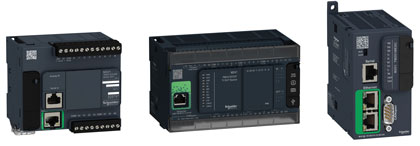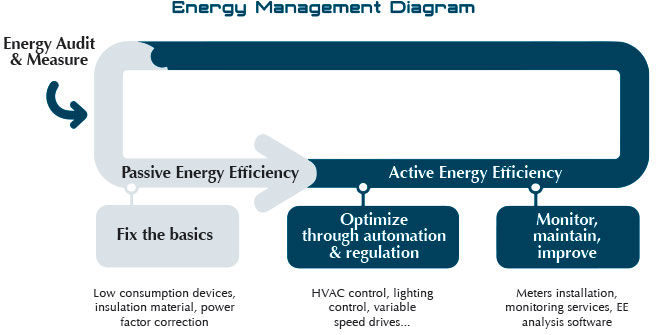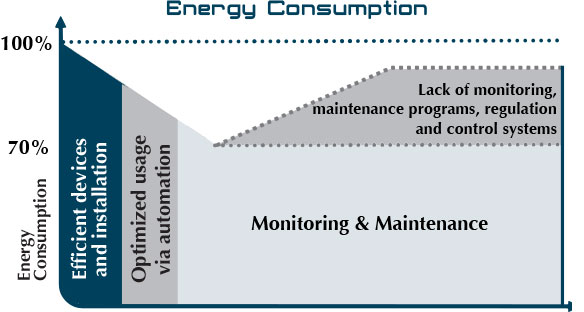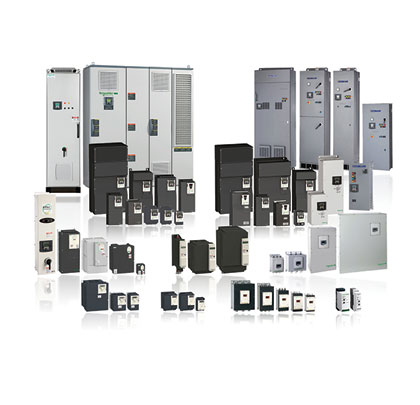As pumping systems become increasingly intelligent, smart devices are at the core of most solutions. The “smarts” in the system may reside in many locations, some examples include—PLCs/PACs, an HMI or a VFD.
In the world of pumping, this has resulted in challenges such as:
- Pumps are frequently located in remote locations—requiring time and expense to address these needs
- Access to proprietary software along with specific knowledge of operating in these software environments.
- Lack of local expertise to diagnose and troubleshoot

The next generation of MachineStruxure™ from Schneider Electric is an intuitive solution for machine automation.
MANAGING TIME AND COSTS
The results have been added time and costs in terms of operator training and in getting the right personnel with the right software to be present at the controller. The widespread adaptation of Ethernet based technologies along with a notable drop in the cost of implementing Ethernet in controllers have enabled for web-based user interfaces to be integrated directly into the PLC’s and PAC’s. The result is a means to connect to a PLC using a web browser and to access customizable screens for configuration, diagnostic and possibly even maintenance purposes.
Configuring a control system during start-up may require observation of the status of communication links and control variables. Some this data may not be published to the HMI as it may not be needed in day to day operations. Including more information on the HMI screen increases clutter and complexity within the interface. The solution is to abstract some of this data from the HMI and utilize some of the in-built Ethernet web server functions.

THE ROLE OF REMOTE MONITORING
In addition to configuration and parameterization, remote monitoring possibilities are another a key value enabled by intelligent pumping solutions. Let’s use energy management as a key example. While the first couple of key actions revolve around enhancing the controls relative to energy consumption, monitoring provides closed loop feedback to ensure continuous system performance. Lack of such feedback will likely result in a relapse in energy performance.
The data available via the web server enables an effective first level of support. To illustrate this, imagine a situation where a PLC is not communicating with one of its controlled variable frequency drives. Without any further details besides the lack of communication, the root cause may be a physical connection issue, or an issue at the device level. The monitoring of the Ethernet link status as well as the ability to ping the device via the web server would indicate if a good physical connection is present which allows for troubleshooting to progress by process of elimination. This helps reduce situations where service personnel are dispatched to a site only to find the problem to be caused by something simple such as a disconnected cable.

The Magelis line offers user-friendly interfaces for a variety of industrial needs.
The web server also includes a scope tool that allows for PLC variables to be compared and monitored over a web browser. This allows for specific parts of control logic or a process to be monitored in real-time without having the same specific parts published in the HMI of the system.
Further to standard web server functionality, pump and pump systems manufacturers may choose to include custom web pages that could contain specific dashboards on the status of various parts of the system. These may have a variety of uses for maintenance or service personnel and end users.
The added benefit here is that end user or service personnel are now working with a graphical environment on a browser instead of a ladder diagram in the software environment. Essentially this reduces support costs and will increase customer satisfaction at the end user as they are empowered to perform some of their own troubleshooting.

IMPROVED CUSTOMIZATION
How easy or hard are these pages to create? Some systems require for the custom pages to be defined from scratch in HTML along with JavaScript for example, while others utilize screen development tools within the PLC programming environments. The screen development tools may include drag and drop objects that can be configured for a variety of functions which reduces development time significantly.
The concept of intelligent pumping is frequently associated with system performance measurements such as energy consumption, and indeed these solutions contribute heavily to these goals. Combined with the added benefits of monitoring, diagnostics and troubleshooting via web enabled user interfaces, intelligent pump control solutions will continue to be a game changer. ■
About the Author
Siva Kanesvaran is a senior design application engineer for Schneider Electric. As a global specialist in energy management with operations in more than one hundred countries, Schneider Electric offers integrated solutions across multiple market segments, including leadership positions in utilities and infrastructure, industries and machines manufacturers, non-residential buildings, data centers and networks and in residential. For more information, visit www.schneider-electric.com/us.
MODERN PUMPING TODAY, December 2014
Did you enjoy this article?
Subscribe to the FREE Digital Edition of Modern Pumping Today Magazine!


